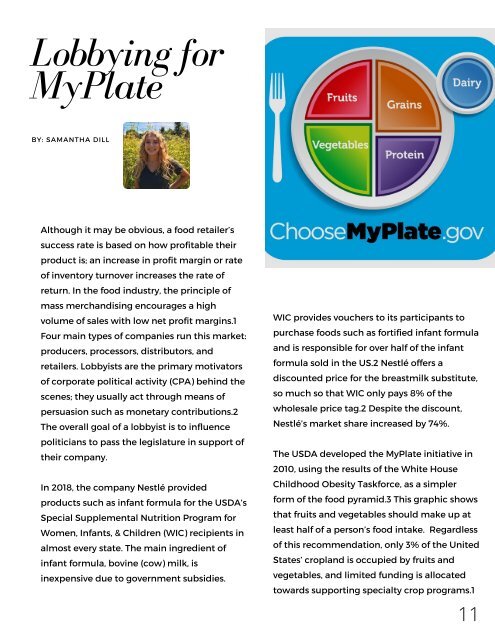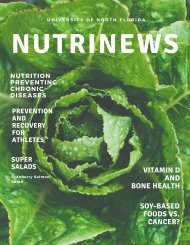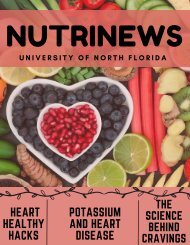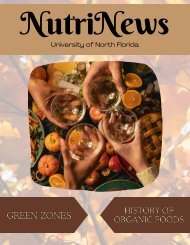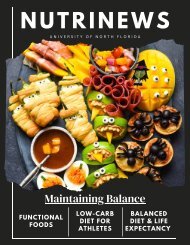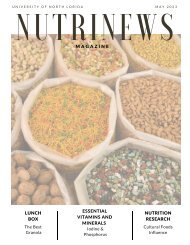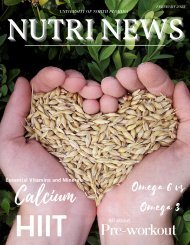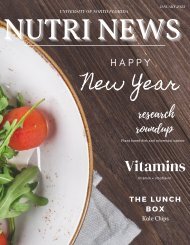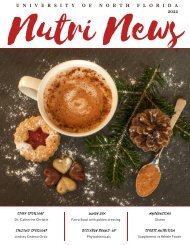You also want an ePaper? Increase the reach of your titles
YUMPU automatically turns print PDFs into web optimized ePapers that Google loves.
Lobbying for<br />
MyPlate<br />
BY: SAMANTHA DILL<br />
Although it may be obvious, a food retailer’s<br />
success rate is based on how profitable their<br />
product is; an increase in profit margin or rate<br />
of inventory turnover increases the rate of<br />
return. In the food industry, the principle of<br />
mass merchandising encourages a high<br />
volume of sales with low net profit margins.1<br />
Four main types of companies run this market:<br />
producers, processors, distributors, and<br />
retailers. Lobbyists are the primary motivators<br />
of corporate political activity (CPA) behind the<br />
scenes; they usually act through means of<br />
persuasion such as monetary contributions.2<br />
The overall goal of a lobbyist is to influence<br />
politicians to pass the legislature in support of<br />
their company.<br />
In 2018, the company Nestlé provided<br />
products such as infant formula for the USDA’s<br />
Special Supplemental Nutrition Program for<br />
Women, Infants, & Children (WIC) recipients in<br />
almost every state. The main ingredient of<br />
infant formula, bovine (cow) milk, is<br />
inexpensive due to government subsidies.<br />
WIC provides vouchers to its participants to<br />
purchase foods such as fortified infant formula<br />
and is responsible for over half of the infant<br />
formula sold in the US.2 Nestlé offers a<br />
discounted price for the breastmilk substitute,<br />
so much so that WIC only pays 8% of the<br />
wholesale price tag.2 Despite the discount,<br />
Nestlé’s market share increased by 74%.<br />
The USDA developed the MyPlate initiative in<br />
2010, using the results of the White House<br />
Childhood Obesity Taskforce, as a simpler<br />
form of the food pyramid.3 This graphic shows<br />
that fruits and vegetables should make up at<br />
least half of a person’s food intake. Regardless<br />
of this recommendation, only 3% of the United<br />
States’ cropland is occupied by fruits and<br />
vegetables, and limited funding is allocated<br />
towards supporting specialty crop programs.1<br />
11


